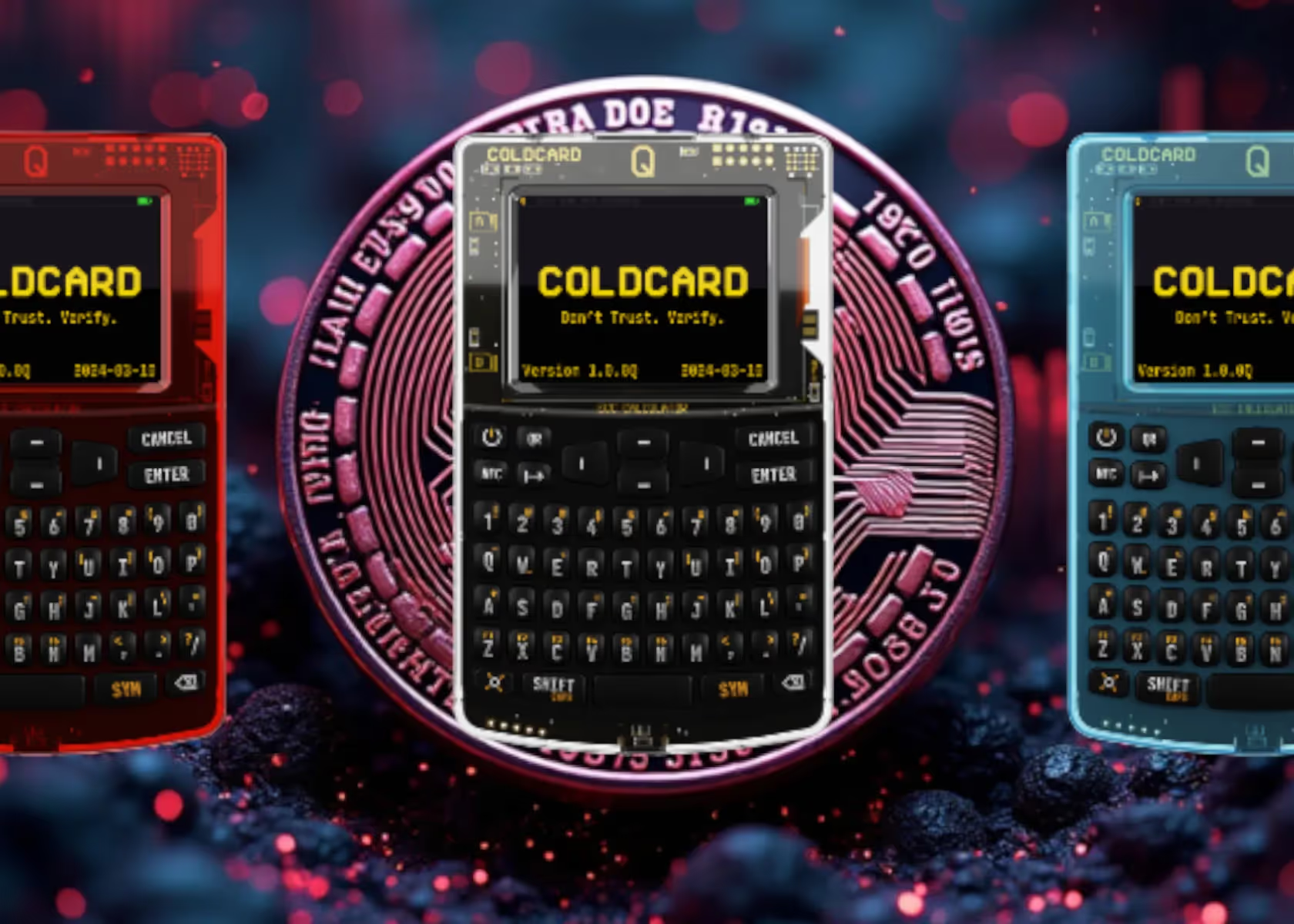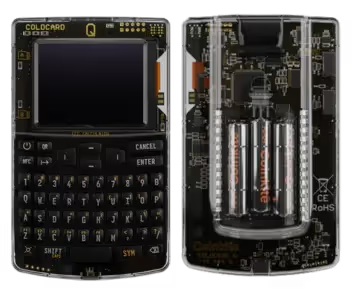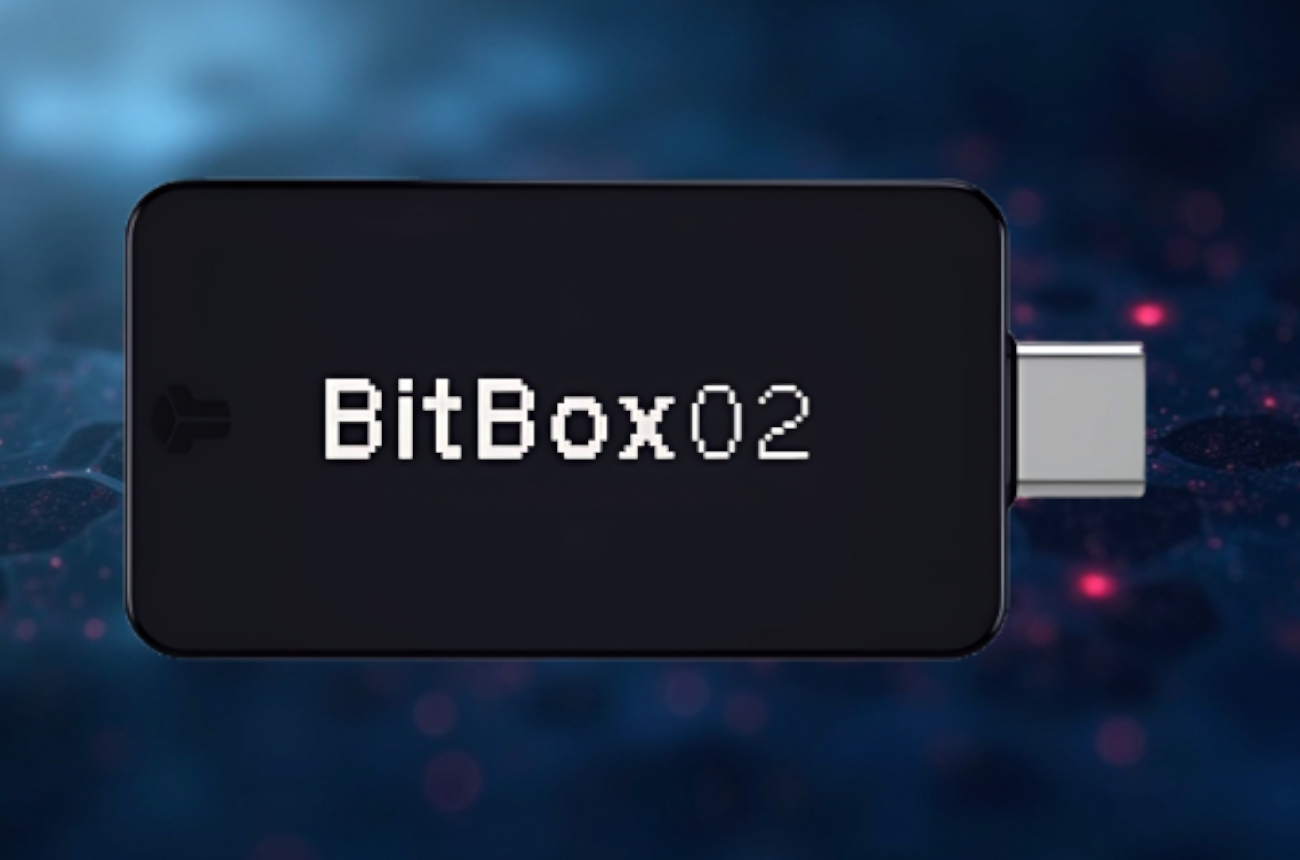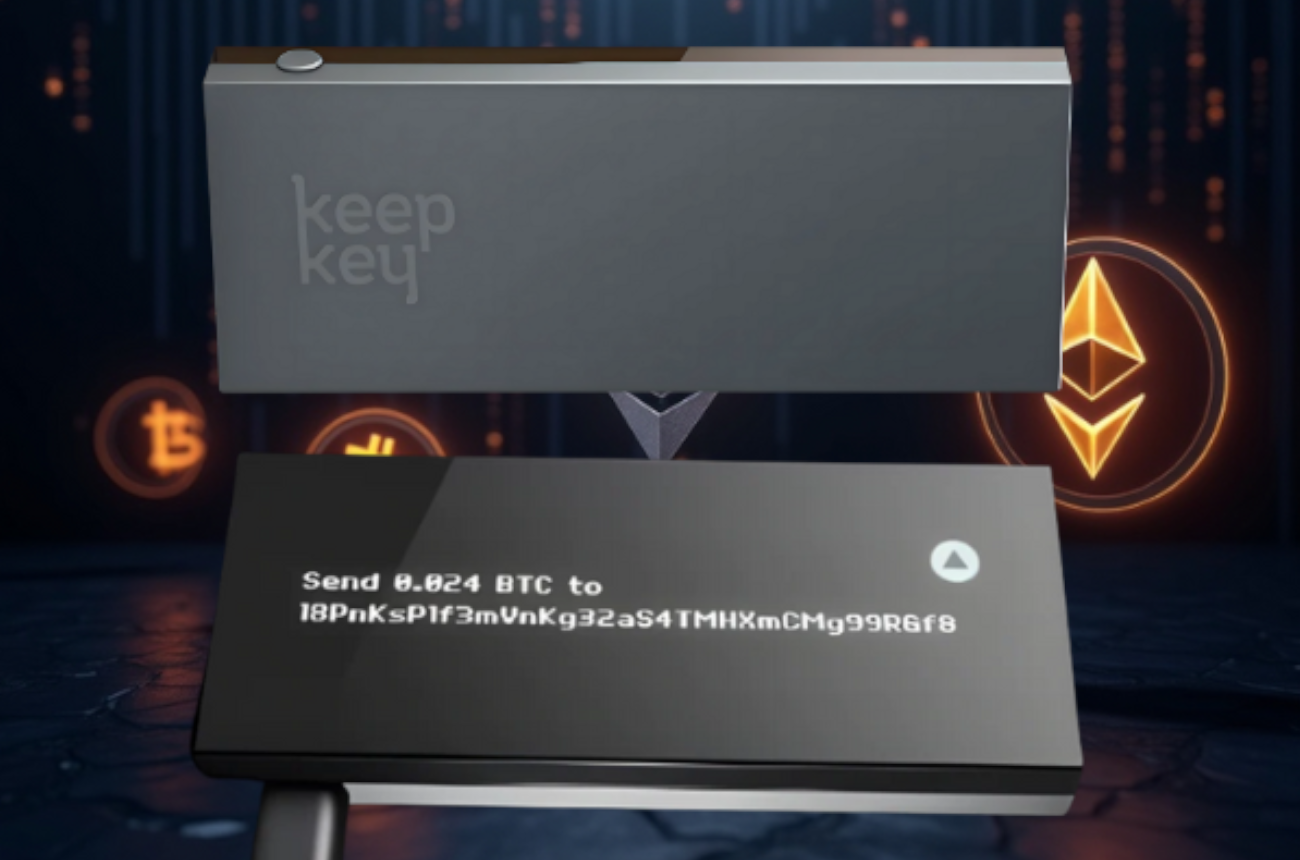Secure Your Bitcoin Offline: Coldcard Q Air-Gapped Hardware Wallet Review

Every so often, we hear about people losing their Bitcoin. This can happen from online scams, bad software, or problems with exchanges where people keep their Bitcoin. Even mobile phone wallets, which seem safe, can sometimes be hacked, and people lose all their money quickly.
The problem? Exposing your Bitcoin, or rather the Hardware wallet, to the internet.
The solution? Offline, Bitcoin-only hardware wallets like the Coldcard Q.
In this review, I'll show you how the Coldcard Q gives top-level security for serious Bitcoin users. It has an easy QR-scan, a real keyboard, a big screen, and works well with popular wallet software. The Coldcard Q is a great choice for keeping your Bitcoin safe offline, without being hard to use.
Pros & Cons
Coldcard Q Quick Specs

- Manufacturer: Coinkite - Canada
- Type: Bitcoin only Hardware Wallet
- Release Year: 2023
- Price: $240
- Air-Gapped Operation: Yes – via QR codes and microSD card
- Display: 320×240 color TFT screen (2.8")
- Keyboard: Full QWERTY keyboard with dedicated navigation keys
- Secure Element: Dual SEs (Microchip ATECC608A + SAM3X8E MCU)
- Power Options: USB-C or 3x AAA batteries
- Connectivity: USB-C (data + power), microSD and QR scanner
- Multisig Support: Yes (PSBT, compatible with Sparrow, Specter, Nunchuk, etc.)
- Passphrase Support: Yes, ideal for decoy wallets
- Secure Backup: BIP39 seed phrase + optional encrypted backups to microSD
- Firmware: Open-source (Coldcard’s proprietary system, written in MicroPython)
- Special Features:
- USB virtualization for PSBT file transport
- Encrypted notes + PIN login delays
- Brick Me PIN feature (self-destruct mechanism)
- Dice roll entropy input (DIY randomness for seed gen)
How I Used the Coldcard Q
I began by setting up both a main wallet and a decoy wallet directly on the Coldcard Q. Using the device's onboard random number generator, I created two 24-word seeds: one standard wallet and one linked to a unique BIP39 passphrase for plausible deniability. This passphrase-protected wallet acts as the real vault, while the decoy gives an innocent appearance under duress or inspection. The full mechanical keyboard made the passphrase input clean and less error-prone compared to other hardware wallets I’ve used.
Next, I exported the main wallet’s xpub to Nunchuk via QR code. Using the Coldcard Q’s rear camera and Nunchuk’s mobile interface, I tested the receiving flow. From another wallet, I sent Bitcoin to a Nunchuk-generated address. The funds appeared after the next block confirmation, providing seamless integration between Coldcard Q and mobile wallets using QR-only air-gapped workflows — no cables or SD cards needed just to deposit.
When it came time to send Bitcoin, I switched over to Sparrow Wallet on desktop. I exported a Partially Signed Bitcoin Transaction (PSBT) to a microSD card. After inserting the card into the Coldcard Q, I reviewed the transaction: address, amount, and fee. The full-sized screen was clear, and the tactile interface made it easy to double-check everything before signing. Once confirmed, I saved the signed transaction back to the microSD and reinserted it into Sparrow to complete the broadcast. The Coldcard never touched a live internet connection throughout this process.
Finally, I added an extra layer of plausible deniability by configuring my Coldcard Q to boot as a basic calculator unless the correct PIN combination is entered. Without this PIN, the device acts like a harmless gadget, obscuring its true purpose as a secure Bitcoin vault. It’s a brilliant stealth feature that aligns perfectly with Coldcard’s security-first philosophy.
Rating (overall 4.4/5)
Secure your Bitcoin offline with Coldcard Q
If you’re serious about Bitcoin security, the Coldcard Q is in a class of its own. This is not just another hardware wallet—it’s a purpose-built, Bitcoin-only, fully air-gapped signing device designed from the ground up for self-sovereign cold storage.
There’s no Bluetooth, no Wi-Fi, and no USB tethering during signing. Instead, the Coldcard Q leverages QR code, microSD or NFC signing to keep your private keys completely isolated from any internet-connected device. The result? You verify every transaction detail offline—on a large, bright screen—before signing with confidence. No assumptions, no blind signing, no trust in software intermediaries.
The added features elevate the Coldcard Q even further: from trick PINs and decoy wallets, to secure passphrase workflows and optional calculator mode on boot, it gives you multiple layers of plausible deniability and deception—without compromising usability. It’s not just secure; it’s designed for users who think about adversaries and want options beyond "just secure enough."
After using the Coldcard Q, it’s hard to see traditional USB-connected wallets the same way. Even my Ledger Nano X, which once felt secure, now serves more as a lukewarm or hot wallet for small, semi-liquid balances. When it comes to true cold storage—the kind you sleep better with—the Coldcard Q is the standard.
It’s not for beginners. It’s not for altcoin collectors. But if you believe in self-custody and want Bitcoin security without compromise, then the Coldcard Q is the best hardware wallet you can own.
And yes—I’ll definitely keep using it.
Build Your Cold Storage Fortress—One Layer at a Time
The Coldcard Q is more than just a Bitcoin hardware wallet — it’s the command center for a truly air-gapped, sovereign cold storage setup. But even a powerhouse like the Coldcard Q works best when paired with other foundational security tools, like a stainless steel backup for your seed phrase and a secure storage routine that fits your lifestyle.
Whether you're just getting started or tightening up your existing cold storage game, Coldcard Q is a serious leap forward. But it’s just one piece of the puzzle.
Want to create a bulletproof Bitcoin setup from scratch? Explore these next:
- Best Bitcoin-Only Hardware Wallets of 2025 – For maximalists who value simplicity and sovereignty.
- Best Metal Seed Phrase Backups in 2025 – The only way to protect your seed words from fire, water and time.
- Top 20 Hardware Wallets for Crypto Cold Storage – A complete guide to the most secure and trusted devices available today.
- Best Biometric Hardware Wallets in 2025 – Because privacy and convenience don’t have to be opposites.
- Best Credit Card-Sized Hardware Wallets in 2025 – Perfect for semi-cold storage and covert carry.
- Top 6 Hardware Wallets for NFTs in 2025 – Yes, even your digital collectibles deserve cold storage.
FAQs
- What is the Coldcard Q?
The Coldcard Q is an air-gapped, Bitcoin-only hardware wallet designed for maximum offline security for serious Bitcoin users. It uses QR codes, microSD cards, or NFC for transactions, ensuring your private keys never touch an internet-connected device.
- How do I set up a decoy wallet (duress wallet) on the Coldcard Q?
Setting up a decoy or duress wallet on your Coldcard Q is a powerful feature for defending against coercion or physical threats. This works using a duress PIN, which opens a different wallet derived from the same seed but with no access to your real funds.
To set it up:
- Start from the main menu and go to Advanced > Danger Zone > Duress PIN.
- Enter an alternative PIN that you will use under duress.
- Confirm the PIN, then choose whether to attach a decoy seed phrase or derive it from the existing one using a different passphrase.
- Once configured, entering the duress PIN at startup will load the decoy wallet, while your real wallet remains hidden and inaccessible.
⚠️ Important: Make sure your decoy wallet has a believable balance and recent transaction history, if needed. A completely empty wallet might arouse suspicion.
- How can I make my Coldcard Q boot into Calculator mode by default?
The Coldcard Q includes a clever stealth feature that turns the device into a fully functional calculator on startup. This hides its true purpose, making it appear like a harmless gadget.
To enable calculator mode on boot:
- Go to Settings > Startup Options > Calc on Boot.
- Toggle this setting ON.
- Exit the menu and reboot your Coldcard to verify the behavior.
Now, when powered on, the device will display a calculator interface instead of the Coldcard welcome screen. To access your wallet, press the 5 key (or another configured shortcut) and enter your PIN.
This feature is particularly useful in high-risk environments where the presence of a Bitcoin wallet might raise questions.
- How do I verify that the Bitcoin address shown in Nunchuk matches the one on my Coldcard Q?
Verifying your receive address is essential to ensure that your funds are being sent to a legitimate wallet controlled by your Coldcard Q, not a tampered version displayed by malicious software.
Directly on the Coldcard Q (without using an app):
- From the Main Menu, select Scan any QR code.
- Point the Coldcard’s camera at the QR code of the address you'd like to verify (e.g., from Nunchuk or a printed address).
- Once scanned, press the 1 key on the Coldcard to verify ownership.
- If the scanned address matches one derived from your seed, Coldcard will confirm it with an “OWNED” message.
💡 This verification process is vital when receiving large amounts of Bitcoin or using a new interface for the first time.
Testimonials
Special thanks to BTC Sessions and Satoshi Radio for their in-depth tutorials. Their content was invaluable in helping me confidently set up and use my Coldcard Q the right way:
Subscribe to the Markets Outlook newsletter
Related Posts















.svg)
